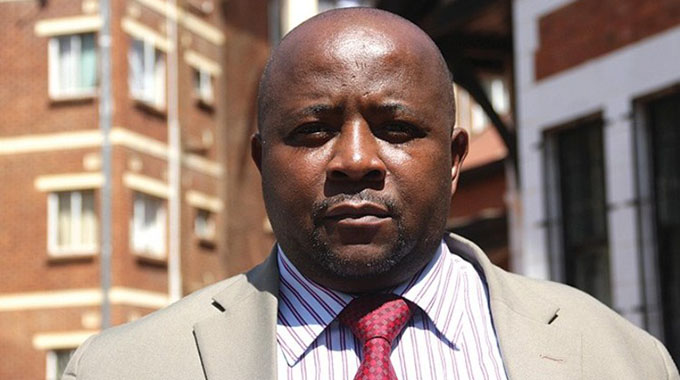Parly committee tables Delimitation Report findings today

Farirai Machivenyika Senior Reporter
THE ad-hoc committee set up by Parliament to analyse the preliminary Delimitation Report tabled in the House last week is expected to present its findings during a joint sitting of the National Assembly and Senate in Harare today.
The preliminary Delimitation Report was produced by the Zimbabwe Electoral Commission and presented to President Mnangagwa at State House on Boxing Day last year. After going through the President, it was tabled in Parliament by Justice, Legal and Parliamentary Affairs Minister Ziyambi Ziyambi on Friday last week as required by law.
The 13-member ad-hoc committee was established last week and is made up of MPs drawn from all political parties in Parliament and is chaired by Zanu PF’s National Assembly Chief Whip Cde Pupurai Togarepi.
Cde Togarepi confirmed that the committee’s report was ready for presentation in Parliament today.
“We have completed compiling the report and it is ready for presentation tomorrow (today) morning,” he said, without getting into detail on the contents of the report.
The analysis of the preliminary Delimitation Report by the ad-hoc committee was guided by provisions of the Constitution, the Electoral Act and whether other issues like devolution, community of interest among others, were considered in coming up with the preliminary report.
The ad-hoc committee also met ZEC during its analysis.
According to the Constitution, the boundaries of constituencies and wards must have at the time of delimitation, equal numbers of voters registered in each constituency within Zimbabwe and in each ward of the local authority concerned.
However, the Commission is allowed to depart from this general principle although it has to ensure that no constituency or ward may have more than 20 percent more or fewer registered voters than other constituencies nationally or wards in the local authority area.
The Constitution further states that when drawing boundaries, due consideration be given to: physical features; the means of communication within an area; the geographical distribution of registered voters; any community of interest between registered voters; existing electoral boundaries; and population.
In the provincial distribution of constituencies, there is little change: Matabeland South lost a seat and Harare gained one. However, within some provinces there is significant readjustment of boundaries to take into account population movements since the last delimitation.
This has involved both merging or collapsing constituencies and creating new ones, with seven provinces seeing most of the changes.
Bulawayo Province retained the 12 constituencies it had but seven constituencies were reconfigured and renamed as follows: Bulawayo North, Cowdray Park, Emakhandeni-Luveve Entumbane-Njube, Lobengula-Magwegwe, Mpopoma-Mzilikazi and Pelandaba-Tshabalala.
Harare Province gained an additional seat from 29 to 30 while three constituencies were created from Harare South constituency namely Churu, Harare South and Hunyani. Epworth was split into two, Epworth North and Epworth South.
Northern Harare saw changes, especially with the growth of Hatcliffe which is now its own constituency after Harare North was reconfigured and renamed.
Manicaland Province still has 26 constituencies but Musikavanhu and Chipinge West were merged to create a new Chipinge West while Dangamvura-Chikanga was collapsed to form Chikanga constituency.
Mashonaland East has 23 constituencies and three constituencies Chikomba Central, Chikomba East, Chikomba West were reconfigured into two constituencies due to low registered voters and the extra constituency was moved into an area where the population was rapidly rising.
Masvingo Province retained its 26 constituencies but Gutu South was collapsed and merged with other existing constituencies due to a low registered voter population which failed to meet the minimum threshold for a constituency and the new Chiredzi Central was created.
Zaka East and Zaka West were merged to form a new Zaka South allowing a new Mwenezi North to be created.
Matabeleland South had low numbers of registered voters and Bulilima East was collapsed to meet the minimum threshold, leaving the province with 12 seats from the previous 13.
In the Midlands Province, Mberengwa lost one of its four constituencies with the district now having Mberengwa East, Mberengwa West and Mberengwa Central. That allowed the creation of a new Mkoba North within Gweru, with the province retaining its 28 constituencies.
Mashonaland Central retained 18 seats, Mashonaland West 22 and Matabeleland North 13 constituencies.
ZEC however, said the changes would not affect voters from casting their votes at their usual polling stations. When moving blocks of voters between constituencies as boundaries changed, ZEC made sure each block of voters assigned to a polling station was moved as a complete block, so all registered voters still vote at the same polling station, even if they now vote in a different ward or constituency.











Comments